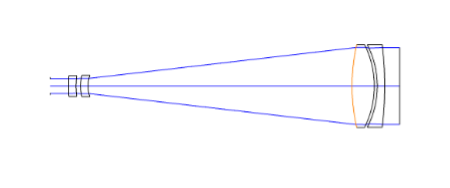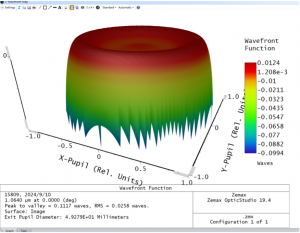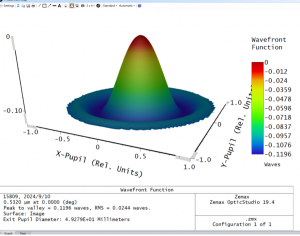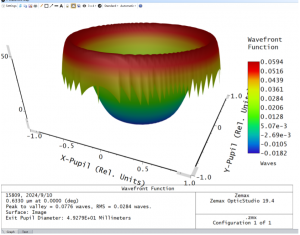Laser beam expanders are optical devices that modify laser beams by increasing their diameter or reducing their divergence angle. These devices, which have their origins in telescopic technology, typically fall into two categories: Galilean and Keplerian. Each category offers unique benefits and drawbacks. To meet various application needs, these basic structures are adapted into different types of beam expanders, including zoom and achromatic variants. This case study examines the design and implementation of an achromatic beam expander.
The beam expander in this study is configured to handle an incoming beam with a 10mm diameter, which it magnifies to a 50mm diameter, achieving a 5X magnification. This setup is optimized for handling both 1064nm and 532nm wavelengths, allowing it to expand beams of different wavelengths simultaneously.

The expander is equipped with four lenses in a Galilean arrangement, chosen to prevent laser convergence within the lenses and maintain an undisturbed wavefront. This configuration is particularly well-suited for high-energy laser applications. Given that this expander is a focal-free system, its performance is typically evaluated using interferometry. For this specific design, the transmitted wavefront deviation (PV) for both the 532nm and 1064nm wavelengths is maintained below 0.25λ.


Traditional Galilean beam expanders consist of a negative lens at the front and a positive lens at the rear. While this arrangement is straightforward, it often only supports a single wavelength due to the precision required in maintaining the air gap between lenses. For optical systems using lasers of varying wavelengths, an achromatic beam expander is needed. Achromatic lenses achieve chromatic correction by pairing glasses with differing dispersion and refractive properties, typically through gluing a positive crown glass lens to a negative flint glass lens.
However, glued lenses are vulnerable to damage under high-energy conditions due to the adhesive layer. The design discussed here eliminates the need for adhesives by using a disassembled lens setup, with an air gap for chromatic aberration correction. This air spacing increases the sensitivity of the assembly process. Moreover, the design is calibrated to correct for the 633nm wavelength, which is commonly used in interferometric measurement. Performance is assured through active adjustment and alignment at this wavelength.

This case study presents a 5X achromatic beam expander designed to correct the most common laser wavelengths—532nm, 633nm, and 1064nm—ensuring performance meets the diffraction limit. The expander’s adhesive-free construction enhances its durability under high-energy laser conditions. By using anti-reflective coatings with high laser damage thresholds, the design significantly improves transmission efficiency, making it suitable for high-energy laser applications.
Contact Shanghai Optics today! We’d be more than happy to discuss your projects and how to best bring them to fruition.